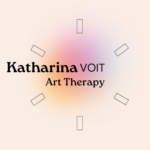FAQ/Frequently Asked Questions
What is Expressive Art Therapy, and how does it work?
Expressive Art Therapy is a therapeutic approach that uses various forms of creative expression—such as painting, drawing, movement, or writing—to explore emotions, reduce stress, and improve well-being. It allows individuals to express themselves in a non-verbal way, helping them gain insight and clarity.
Who can benefit from Expressive Art Therapy?
Anyone can benefit, regardless of age or artistic skill! It is especially helpful for people experiencing stress, anxiety, trauma, grief, or life transitions. It’s also great for expats adjusting to a new culture or anyone looking for a creative outlet for self-discovery.
Do I need to be good at art to participate in Expressive Art Therapy?
No artistic experience is required! Expressive Art Therapy focuses on the process, not the final product. It’s about self-expression, exploration, and allowing yourself to fully immerse in the creative process rather than focusing on the end result.
What can Expressive Art Therapy help with?
Expressive Art Therapy can help with:
- Anxiety and stress relief
- Trauma and emotional healing
- Self-esteem and self-expression
- Adjustment to new environments (such as moving abroad)
- Personal growth and mindfulness
How is Expressive Art Therapy different from other forms of therapy?
Expressive Art Therapy goes beyond verbal communication by incorporating creative expression as a way to explore emotions. Instead of relying only on conversation, it uses artistic mediums like painting, movement, and writing to help process feelings, gain insight, and promote healing. This approach can be especially helpful for those who find it challenging to express emotions with words.
What types of art techniques are used in Expressive Art Therapy?
I work with various techniques according to each person’s needs, but I often work with:
- Drawing & Painting – visually explore emotions and experiences
- Collage & Mixed Media – Combining images and materials
- Movement & Dance – Using the body to release emotions
- Writing & Poetry – Translating thoughts and feelings into words for reflection
- Sculpting & Clay Work – A tactile approach to self-expression and grounding
Is Expressive Art Therapy suitable for adults and children?
Yes! Expressive Art Therapy is beneficial for all ages. Children often find it easier to communicate through art, while adults use it for self-exploration, healing, and stress relief.
What can I expect in my first Expressive Art Therapy session?
In your first session, we’ll discuss your goals and introduce step-by-step creative exercises. There’s no pressure to create anything “perfect”—it’s about expression and exploration. Each sessions is tailored to your needs and comfort level.
How can Expressive Art Therapy help expats in Paris?
Living abroad can be exciting but also challenging. Expressive Art Therapy helps expats navigate cultural adjustment, loneliness, and identity shifts. It offers a creative way to process emotions, find clarity, and connect with yourself in a new environment.
How do I book a session, and what are the costs?
You can easily book a session through the calendar in the “Offerings” section, or by sending me an email at hello@katharinavoit.com Prices vary depending on the session format (individual or group). Please feel free to reach out for more details!
